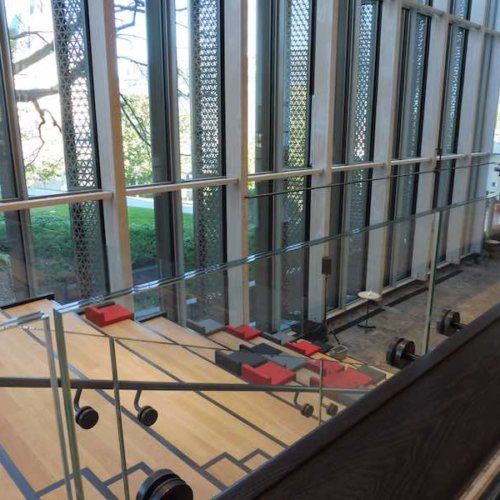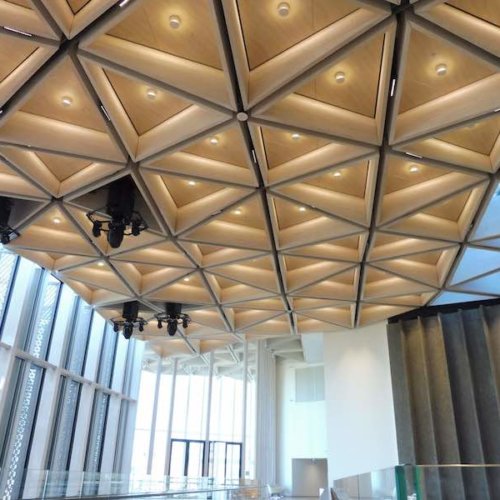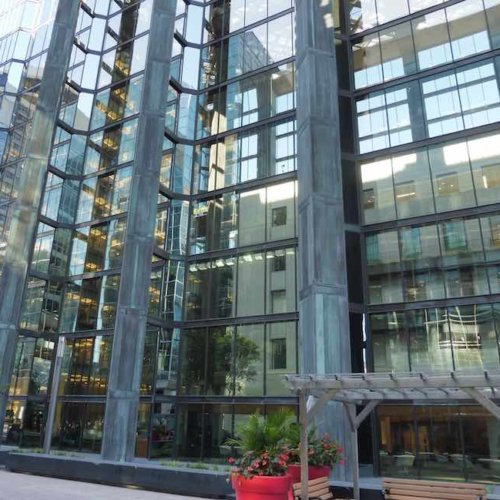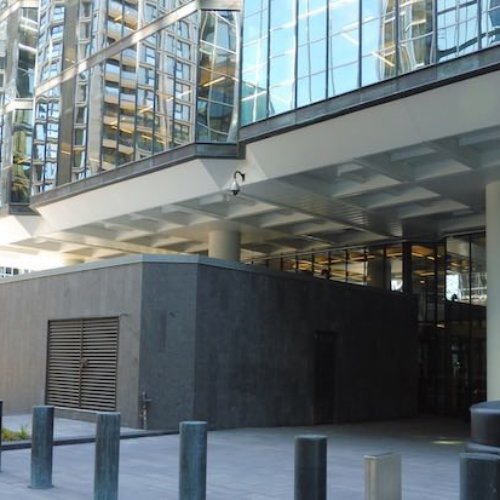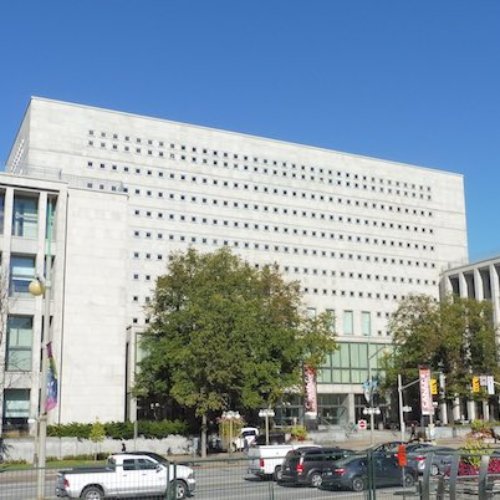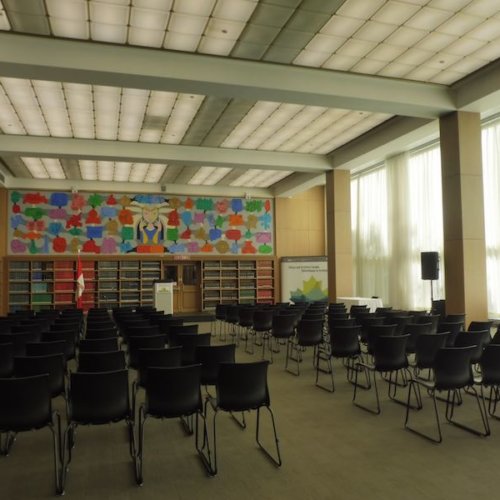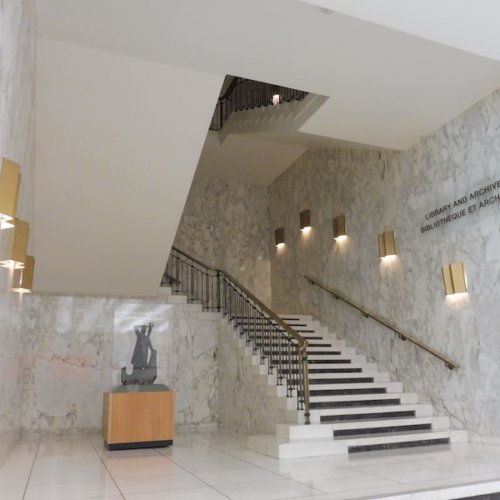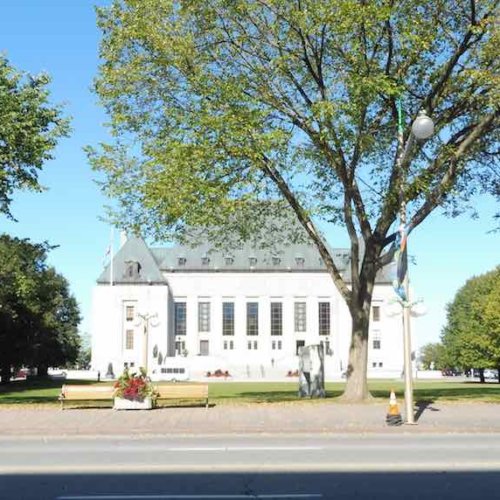"I was never sympathetic to the short lived postmodern movement – and this building [AT&T Building, New York] in particular," he wrote in the caption. "However it is an important part of our heritage and should be respected as such."
(British Architect, Norman Foster quote in dezeen Magazine article by Dan Howarth, 2017November3)
I am always grateful to be taken back to past thoughts, or as I sometimes say – “reflecting on the value of history”, as from them I always emerge with an evolved perspective. Today I am taken back to a particular topic that was recently brought to the forefront when I attended the Association of Preservation Technology/National Trust of Canada conference in Ottawa. I had many noteworthy insights from the week I spent in Ottawa – the conference itself and my urban exploring in what was my first trip to Ottawa. It is a gorgeous city to visit in the autumn for numerous architectural, urban, heritage, arts and culture reasons yet who would have guessed at this time in my career, a significant part of the experience left me reflecting on my thoughts of post-modern architecture? Certainly not me yet it appears to be the case! It is “mid-century modern building conservation” that I seem to have been left contemplating the last few weeks and much more than I ever have thus far in my career.
“Back in the Day” Reflections
When I studied architecture and its historical roots back in the 1980’s, I easily valued each architectural style for the complexity of thought, context and design that came from a particular historical period of time. As well I simply loved studying architectural history – the architects, design rationale and the influence of architecture in building a city. At that time I appreciated all of the architectural styles in some manner. However, it’s fair to say I was definitely left with more of a connection to some than others. This stands most true of my thoughts on brutalism and post-modern architecture. The reality was I didn’t connect with brutalism at all. Post-modern felt too new (much of it coming mainly in the 1970’s in the USA) to dive into its value architecturally. Naturally, my character seemed to connect with late 19th century and early 20th century styles and for some reason very much mid-century. I am thinking the mid-century connection was my interest in my parents growing up decades – I loved the photos of their youth and the styles in hair, fashion, architecture and the social nature of the time. Mid-century design was inviting to me with its interesting horizontal architectural lines, scale and connection to nature. Mostly, I valued the one-on-one people connections that seemed to come from the 1950’s and are ones that I also had the pleasure of growing up with in the 1960’s and 70’s. As for the early 20th century appreciation, I think my European ancestry kicked in big time as an architecture student! It probably helped that my program’s many architecture history classes focused on the earlier architectural styles rather than newer modern designs. This does not mean that I didn’t appreciate modern architecture as I most certainly did at the time. I will however admit, I am still very much on the fence with brutalism. Maybe over time, I can warm up to it. We will see.
To this day, I value that each architectural style had a design process of analysis and thought and ultimately a story as to why they evolved as they did. Given modern architecture didn’t resonate with me, I didn’t give it much thought outside of recalling that I thought those styles would have challenges going forward – a tough sell to conserve, adapt and hold there historical value as other earlier styles had. It’s only now as I think about historic intervention challenges that I have actually made a stronger connection to these modern styles, value them more and have a desire to think about the conservation opportunities for these buildings. I think about them now as a conservationist rather than solely with an architectural eye. In that, I appreciate having recently experienced what I thought were successes and good creative problem-solving to protect and adapt various mid-century modern buildings. Despite having structural and good sense environmental “staying power”, they are a threatened architectural style for the challenge they pose to adaptive re-use and generally peoples desire to have a better human-scale connection to them.
“Present Day” Thoughts
My recent conference experience raised the bar on my thoughts in regards to heritage conservation of modern architecture. I admit it is a pleasant surprise to me that I would actually even be writing my thoughts on a historic architectural style that I had rarely given much thought to professionally. Many of these buildings now fit the 50 years old heritage criteria and many of them are in growing urban centres, including my city. The chances of demolition are great, and if not that, the need to expand or rehabilitate them is in the forefront, which opens up the discussion on intervention to post-modern buildings.
No one can fault a modern building for its simplicity of form and function – the reasons I actually appreciate them most. At the same time, I believe buildings need to interface with the public realm and connect with people experiencing them in an urban environment and their actual function. So how exactly does one venture to conserve, add onto or enhance this built-form (basically intervene) so it continues to be viable through adaptive re-use and connecting with people – me inclusive?
As I believe with all conservation, design and planning projects, the key is to understand its context – that means each building must be problem-solved in its specific context (architectural style and surrounding context) be it the building design or adaptive re-use potential. Equally, it’s important to understand how a city values the purity of architectural style layering and diversity as a part of the city’s identity. Modern buildings play a role in our history, they play a role in the evolution of our cities and they do have a past and future of being successfully conserved. I think part of the answer is to not make blanket decisions based on assumptions that post-modern architecture has no historic value, that they can’t be adapted for other uses, or integrated with the public realm to provide a more pedestrian-scale experience. I think there is a lot that can be done in the public realm to integrate these building without taking away from them architecturally including creative adaptive re-use internal to the walls to ensure new viable uses. I also don't believe there is a blanket architectural design intervention to any of them.
I do share that by genuinely understanding a buildings design history, its context in a city, and adaptive re-use potential, I am an optimist that there is a creative and successful solution for each of these modern buildings. When I did the mid-century modern building tour, I heard differing opinions on the interventions that took place on each of the buildings yet for me the measure of success was that the buildings were being conserved with a genuine understanding of the value of intervening appropriately to protect the architectural style. The purity of the architectural style was valued enough to find a creative way to breathe new viable life into them without significantly altering or taking way from their original design intent. When this is achieved, I think the interventions are successful, as they have conserved the layering effect of architecture in building a character city.
“Go Forward” Thoughts on Modern Building Interventions
I had the pleasure of experiencing and hearing the thought processes that went into the building conservation interventions to the National Arts Centre (Brutalism Architecture, built 1969, designated a National Historic Site of Canada in 2006, entrance and art space addition in 2017), Bank of Canada Building (late Neo-Classical Style, built 1937, glass atrium addition in 1979), Public Archives and National Library (Federal Classical Modernism with Modernism new trends, built in 1967, recognized as a Classified Federal Heritage Building in 2004) and Supreme Court Building (Classical design, built 1939, recognized as a Classified Federal Heritage Building, rehabilitation to start 2023). As you can see in the pictures below (and further on my instagram posts), I was left with an appreciation of each of them for one reason or another – mostly grateful they are all there and have a story to tell including sensitivity in the intervention decisions made.
The intervention stories on these mid-century modern buildings were encouraging as I heard there was an understanding of the architectural style heritage value and further detailed design thought on how to best intervene to conserve the building. Upon returning from the conference I was encouraged to read in the Association of Preservation Technology Bulletin that the APT Technical Committee on Modern Heritage is growing and working on a preliminary framework towards APT Principles for Practice on Renewing Modernism. This is something to continue to follow to ensure that heritage conservationist and cities truly work to conserve and sensitively intervene on modern buildings such that they remain an important part of a city’s fabric and history. With my recent conservation thoughts, I signed the petition and I am following one of the latest historic post-modern conservation causes happening with the proposed intervention to Philip Johnson’s, AT&T Building in New York. My high level thoughts - I don’t think this intervention has genuinely understood the heritage value of post-modern buildings and their role in a city’s architectural history rather it is looking to modernize for the sake of art or a poor attempt to problem-solve an adaptive re-use issue and therefore, achieve an appropriate non-impacting public realm intervention for the building.
“We are all concerned about the fate of this building [AT&T Building, New York]. It’s not something to be taken casually,” said Stern. “It really is a landmark. It hasn’t been designated a landmark, but it is a landmark for the city and for the history of architecture.”
(Architect, Robert A.M. Stern quote in Metropolis magazine article by Zachary Edison and Anna Fixsen, 2017November3)
Hopefully, like others and mine, your thoughts and appreciation of modern architecture conservation will evolve to be a little more in the forefront.
For recent news articles on Philip Johnson's AT&T Building see the following: Support for Designation Letter and NYMag.


